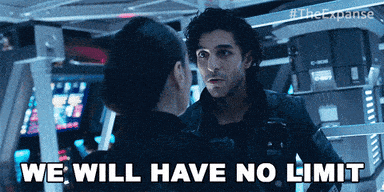- DeFi Rate
- Posts
- This Week In DeFi – April 20
This Week In DeFi – April 20
Happy Friday, DeFi readers!
Today’s edition is our last hurrah as DeFi Rate before we merge with Milk Road starting Monday!
Don’t worry, you don’t need to do anything—we’ve got your subscription transfer covered.
Just expect even richer content, deeper dives, and a few laughs along the way with Milk Road, where crypto is made simple and entertaining.
Hope you’re as excited as we are. 🥂
This week…
Kraken launches Web3 wallet
OKX launches Layer 2, “X Layer”
Heroglyphs adds PoW touch to solo-staking on Ethereum
Solana rolls up update to ease congestion
Kraken launches Web3 wallet
Crypto exchange Kraken has launched its own self-custodial wallet for mobile, named Kraken wallet.
The wallet has multi-chain support, supporting NFTs, tokens and DeFi positions and is designed to minimize the collection of customer data for maximum privacy. Its code has also been made open-source on GitHub.
Unfortunately, the wallet remains a hot wallet due to Apple iOS CryptoKit compatibility, meaning that it must use an internet connection and does not use secure elements for signing transactions.
ICYMI…we just launched Kraken Wallet!
The simple, secure and powerful way to explore Dapps, make gaming purchases, and manage your NFTs with ease!
Learn more ⤵️
blog.kraken.com/product/introd…— Kraken Exchange (@krakenfx)
2:23 PM • Apr 18, 2024
OKX launches Layer 2, “X Layer”
OKX has launched its own Ethereum-based zero-knowledge Layer 2 network, X Layer, on mainnet, aiming to integrate its 50 million users into the ecosystem.
The network, developed using Polygon's Chain Development Kit, supports over 170 decentralized applications and uses OKX's platform token, OKB, to pay transaction fees.
X Layer seeks to enhance transaction throughput, reduce costs, and maintain Ethereum's security, while its connection to the AggLayer facilitates shared liquidity across multiple blockchain networks.
Hiya creators, builders, founders 👩💻👨💻
🚨 We're opening X Layer Mainnet to the Public 🚨
With +200 dApps building, X Layer is now accessible to everyone, not just developers.
Experience the power & security of our zkEVM L2 network firsthand.
Start building:… twitter.com/i/web/status/1…
— X Layer (@XLayerOfficial)
2:11 AM • Apr 16, 2024
Heroglyphs adds PoW touch to solo-staking on Ethereum
Heroglyphs Protocol, a new Ethereum-based project, has released its whitepaper describing its aim to address issues with ETH distribution for validators.
The protocol seeks to incorporate elements of Bitcoin's proof-of-work system into Ethereum's proof-of-stake framework, incentivizing solo stakers.
Heroglyphs allows validators to earn new tokens, promoting a more decentralized and equitable distribution model, with the protocol set to launch on Friday.
Tired but excited to share v0 of the Heroglyphs white paper, coauthored with the amazing @0xMaki and @Glovin_
Heroglyphs is designed to reward solo stakers, adding a bit of PoW into Ethereum’s PoS
V1 and launch coming Friday
Save the network, anon
gn
— Manny (@mrinconcruz)
7:25 PM • Apr 17, 2024
Solana rolls up update to ease congestion
Solana has rolled out its version 1.17.31 update, designed to address the ongoing congestion issues on the network.
The update, recommended for all MainnetBeta validators, introduces five specific changes designed to enhance the performance of the nodes that secure the chain.
The development comes as Solana looks to maintain its competitive edge, while Ethereum Layer 2s such as Base are attracting users with similarly cheap fees and fast transaction speeds.
The v1.17.31 release is now recommended for general use by MainnetBeta validators. This release contains enhancements which will help alleviate the ongoing congestion on the Solana Network.
— Solana Status (@SolanaStatus)
4:25 AM • Apr 15, 2024
Heroglyphs: Re-decentralizing Ethereum?
One concern that has always surrounded Proof-of-Stake (PoS) is a possible spiral into centralization, as wealthy stakers reap all of the rewards.
In other words, the rich get richer.
But what if an element of Proof-of-Work (PoW) could be weaved into the PoS model to level the playing field once again?
That’s what Heroglyphs Protocol is setting out to do.
The Heroglyphs protocol
In a nutshell, Heroglyphs aims to diversify the Ethereum validation process to make it more democratic and secure – addressing the imbalance created by liquid staking protocols and large validators.
It does this by making the validating process more attractive and financially rewarding for smaller validators, by proposing a system where everyone has a fair chance to contribute and earn from the network.
How does it work?
Two Modules: The Heroglpyhs protocol has two parts—encoding and translating. Encoding allows validators to encode valuable information into their wallet addresses. Translating lets them create tokens with these encoded wallet addresses, which can then be mined or validated by complete validators.
Fair Distribution: The aim is to ensure a fair distribution of rewards and influence across all validators, no matter their size. This is to prevent the system from favoring only the larger players and to encourage more participants to become validators.
Economic Incentives: By providing economic incentives specific to validators, Heroglyphs hopes to make being a solo validator (a smaller, independent operator) more economically viable.
Reviving Ethereum's Vision: The paper suggests that to maintain Ethereum's original vision, which included a decentralized and secure network, it's important to reverse the trend towards centralization.
Conclusion
Whether or not Heroglyphs will catch on is still yet to be seen. However, the model represents an important consideration that all PoS chains may want to consider, for the sake of their own longevity.
Interest Rates
Highest Yields: Nexo at 10% APY, Aave at 8.1%
MakerDAO Updates
DAI Savings Rate: 13%
ETH Stability Fee: 13%
WBTC Stability Fee: 14.5%

Highest Yields: Nexo at 10% APY, Aave at 7.8%

Top Stories

Gif by CrypTalks on Giphy


Stat Box

Total Value Locked: $85.44B (down 11% since last week)
DeFi Market Cap: $85.20B (down 22%)
DEX Weekly Volume: $42.20B (up 18%)
Bonus Reads
[Pedro Solimano – The Defiant] – Layer 2 Scroll zkEVM Introduces Points Program
[Sarah Wynn and MK Manoylov – The Block] – Avraham 'Avi' Eisenberg convicted for $110 million Mango Markets exploit: report
[Elizabeth Napolitano – The Block] – TikTok owner ByteDance's tech arm collaborating with Sui builders on web3 gaming, socialFi
[Yogita Khatri – The Block] – Solana DEX Drift set to airdrop 100 million tokens to users
